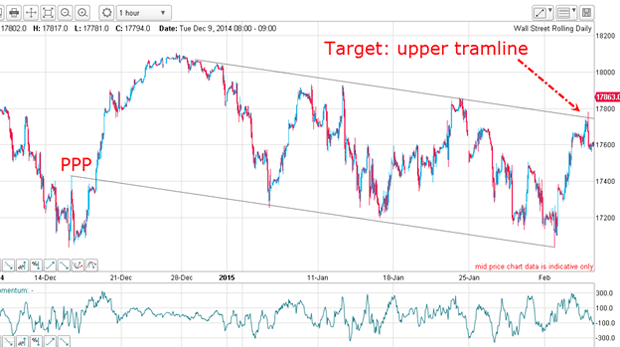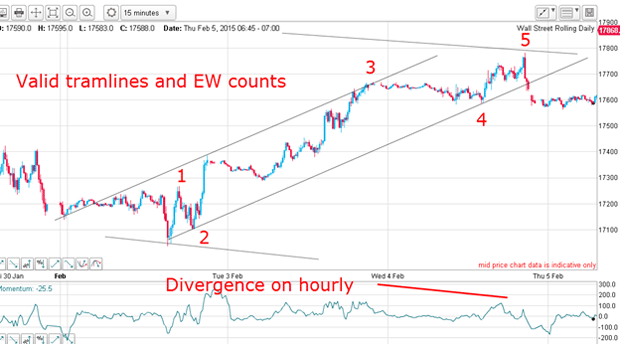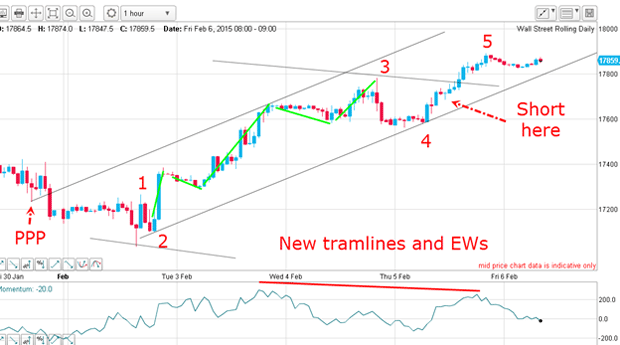The insultingly simple secret of successful traders
No trader gets it right every time, says John C Burford. That's why you must always have a plan in place for when your trades don't work out.
Yesterday was one of those days when the markets behave just how you expect them to.
The Dow was as close to a perfect example of my trading methods as I was likely to find. So I broke out the video camera and used it for the basis of a new video tutorial for Trading for Profit Academy members.
It was an illustration of how to combine my three methods tramlines, Elliott waves and Fibonacci to analyse the markets in real time.
Subscribe to MoneyWeek
Subscribe to MoneyWeek today and get your first six magazine issues absolutely FREE

Sign up to Money Morning
Don't miss the latest investment and personal finances news, market analysis, plus money-saving tips with our free twice-daily newsletter
Don't miss the latest investment and personal finances news, market analysis, plus money-saving tips with our free twice-daily newsletter
Naturally, I was not 100% confident that the trade would work out (in fact, it didn't! More on that later).
But the key message was that my methods show you the right place to place a trade, and the right place to set your protective stop loss (to minimise your risk in case you are wrong).
The secret of trading
In fact, minimising losses on your losing trades is one of the most disregarded rules of trading. I know that's true, because I've read about it in my email inbox over the past few weeks.
I've received countless emails from traders who have been caught out by the huge volatile swings in the Dow (and other stock indexes). Many did not use a sensible stop-loss policy, and suffered the consequences.
So what is the secret of good trading? Simply this: with disciplinelose as little as possible on your losers and let your winners make your profits.
It's so simple as to be obvious. But it's a subtle idea, one which takes a long time to master.
For example: always place your stops so that you know in advance what your maximum loss will be. Remember, no trader on earth wins every bet, so do not expect that of yourself.
Also, never fall in love with any trade. I find generally that the stronger I believe in it, the less likely it is to work out. Isn't that strange?
In fact, some of my best trades have been those where I had little faith and appeared unlikely to work out.
My textbook example

I had a superb tramline pair working with great touch points and a prior pivot point from late December (shown on the chart as a PPP). OK, that gave me a solid pair of long-term tramlines.
Next, I zoomed into the most recent rally since the beginning of February, using the hourly chart. This view revealed that an Elliott-wave pattern was developing:

Clearly, I have a valid Elliott wave count complete with a long and strong wave 3 and a momentum divergence at wave 5 (I've shown this as a red bar).
So, we have
a hit on the upper long-term tramline,
a complete Eliott wave pattern, and
a break on the short-term tramline.
All of those combined to suggest a high-probability bet that the Dow was about to fall.
Let's zoom in for a closer look:

How I bet on this
I knew where to place my trade. But no matter how confident I am, I always place my stop-loss in advance to protect me in the event that I am wrong.
That is a whole subject in itself. But for our purposes, we can simply apply my 3% rule: your stop-loss should be placed in such a way that your maximum losses from this trade would be 3% of your total account.
In this case, I bet the market would fall from the 17,660 level on Thursday morning with my protective stop-loss at 17,700.
How did the trade work out?

Well, I was blown away! The market just kept on climbing past all of my Fibonacci levels and crashed through my upper tramline. It was the equivalent of a 100-to-one nag winning the Derby!
That trade was a loss. But it was allowed for beforehand. I didn't shed any tears. I took a 3% loss, and moved on to the next trade.
And that's all there is to it. Do your homework and find low-risk trades. When you're right, enjoy your wins. When you're wrong, have a plan in place so that you don't lose much money.
It all sounds so easy, right?!
Get the latest financial news, insights and expert analysis from our award-winning MoneyWeek team, to help you understand what really matters when it comes to your finances.
John is is a British-born lapsed PhD physicist, who previously worked for Nasa on the Mars exploration team. He is a former commodity trading advisor with the US Commodities Futures Trading Commission, and worked in a boutique futures house in California in the 1980s.
He was a partner in one of the first futures newsletter advisory services, based in Washington DC, specialising in pork bellies and currencies. John is primarily a chart-reading trader, having cut his trading teeth in the days before PCs.
As well as his work in the financial world, he has launched, run and sold several 'real' businesses producing 'real' products.
-
 High earners underestimate how much they need to retire comfortably
High earners underestimate how much they need to retire comfortablyHigh net worth individuals grossly misjudge how much money they need for a comfortable retirement, new data shows, with many not saving enough.
-
 Retired banker who gave wife £80m to avoid inheritance tax won’t face equal split in divorce
Retired banker who gave wife £80m to avoid inheritance tax won’t face equal split in divorceFamily lawyers say the Supreme Court ruling will have significant impact on high net worth divorce cases